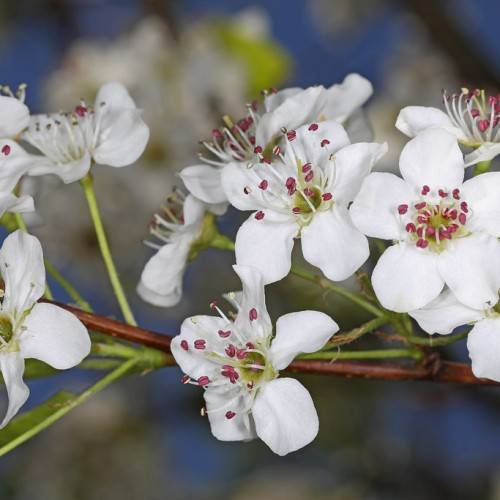
callery pear
Pyrus calleryana 'Capital'
Cycle:
Perennial
Watering:
Minimum
Hardiness Zone:
5 - 9
Flowers:
Flowers In Spring
Sun:
Full sun
Leaf:
Yes
Growth Rate:
High
Maintenance:
Low
Thorny:
Yes
Invasive:
Yes
Care Level:
Medium
watering
The Callery pear should be watered regularly to keep the soil evenly moist, but not soggy. Water the plant thoroughly, letting the water trickle down and saturate the soil until it begins to drain from the bottom of the pot. During periods of active growth (in mid to late spring), water the pear tree every week or 2, adding extra water during periods of hot, dry weather. During winter, water the tree only as necessary to keep the soil from drying out completely. Depending on the temperature and humidity, this will likely be only every few weeks or so.
sunlight
The Callery Pear (Pyrus calleryana 'Capital') requires full sun for optimal growth. This means the location should receive at least 6 hours of direct sunlight per day. Eight hours of direct sunlight is recommended to receive the most benefits from the sun. Additionally, the sun should be fairly consistent as changes in amount of sunlight will affect the health and growth of the plant. The best time of day for sunlight on the Callery Pear is within the morning hours. Morning sun is generally the most beneficial as it helps the plant heat up and become more active. It also helps the plant get a head start on photosynthesis, allowing it to build up its energy for the day. However, it is important to note that the Callery Pear still needs some sun during the hottest part of the day to remain healthy.
pruning
Callery pear trees (Pyrus Calleryana 'Capital') should be pruned twice a year for best shape and health. Pruning should be done in late winter or very early spring before new growth begins, and then again during late summer, after the primary flowering period. Winter pruning should involve removing dead, diseased, and weak branches, as well as any crossed branches. Prune any sucker sprouts or water sprouts that are growing straight up, and thin out any overcrowding. This process of heading back and thinning encourages a good balance between woody and leafy growth. In the summer months, Callery pear trees should be pruned to shape and tidy up the framework. Remove water sprouts or vertical branches that detract from the overall structure. When done, the tree should be roughly conical or pyramidal in shape. Overall, the amount of pruning needed for Callery pear trees can vary. Aim to prune just enough to reduce overcrowding and encourage denser, leafier growth.
